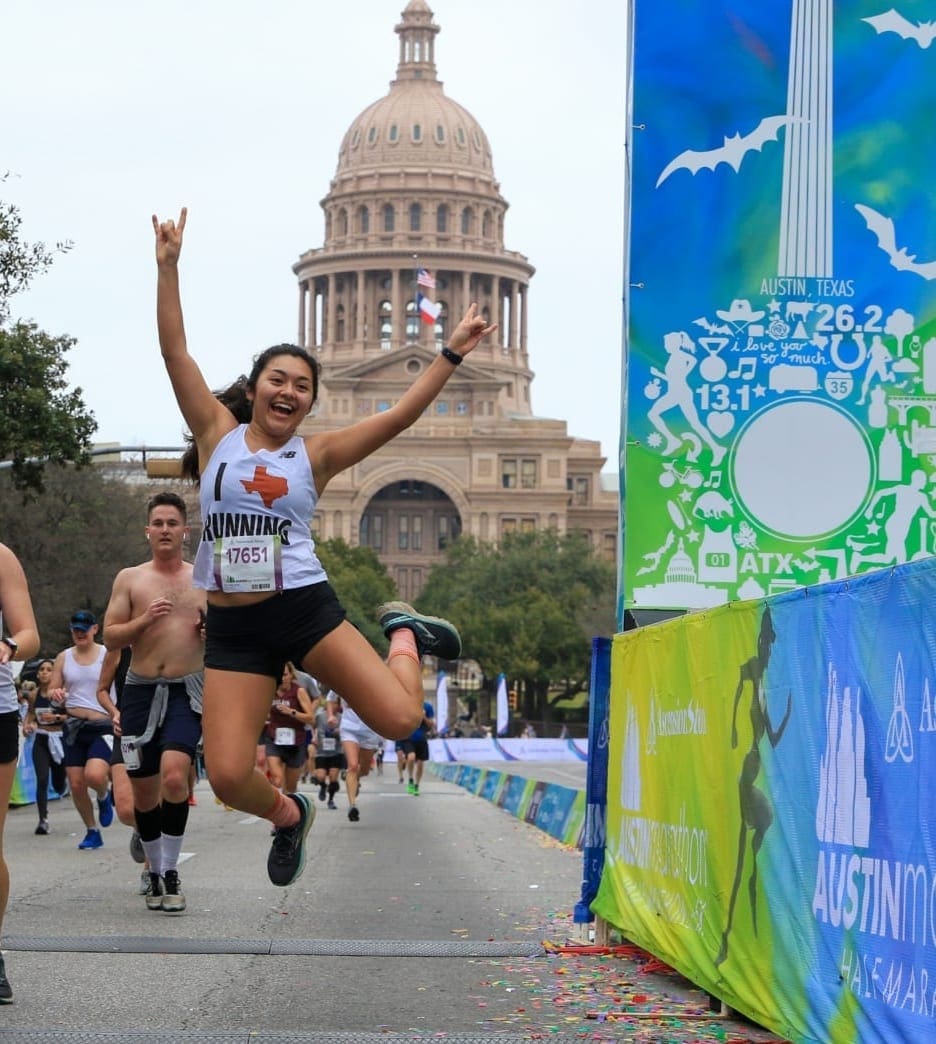How to Gain Strength and Why It Helps You
Endurance circuits that’ll help runners gain strength
As runners we always want to see improvement. Especially if we started training for the first time! We want to crush our goals. We want to run further and faster. Gaining strength when training for a marathon or half marathon isn’t easy. In order to run longer distances, you must properly prepare your body to run longer distances. Runners need to gain strength, not build muscle mass. That’s why an endurance circuit is beneficial. We break down how it’ll help you gain strength and explain “the why.” Follow the two workouts below to gain strength during your Austin Marathon training! BONUS: gym and weights aren’t needed.
Gain strength and take your fitness to the next level
 Combine anaerobic and aerobic during your next workout and take your fitness to the next level. This type of workout is different from strength circuit training and requires less time. Strength circuit training is completing a number of different exercises one after the other in quick succession. These types of workouts are good for general health and muscle strength. However, most distance runners aren’t looking to gain muscle mass. They want to gain strength, make running longer distances easier, and improve race performance.
Combine anaerobic and aerobic during your next workout and take your fitness to the next level. This type of workout is different from strength circuit training and requires less time. Strength circuit training is completing a number of different exercises one after the other in quick succession. These types of workouts are good for general health and muscle strength. However, most distance runners aren’t looking to gain muscle mass. They want to gain strength, make running longer distances easier, and improve race performance.
You can accomplish this by splitting the number of exercises in a normal strength circuit into sets. Try two sets of four (eight total) or two sets of five (10 total) movements. At the start, middle, and end of each set, run at a pace that will get your heart rate to your desired performance (BPM – beats per minute). Use the pace of your shortest distance race (ex. marathoners – run your goal 10K pace, 5Kers run your goal mile pace). Start at a distance that will get your heart rate to the desired BPM and progress from there.
Intro Endurance Circuit Workout
Warmup: 800m + stretch
200-400m at goal pace for shortest race (70-80% – max BPM)
- 5 – burpees
- 10 – backward lunges (each leg)
- 5 – pushups
- 10 – sit-ups
- 1-minute plank
- 30-second break
200-400m at goal pace for shortest race (70-80% – max BPM)
- 10 – tricep dips “bench dips”
- 15 – calf raises
- 10 – squats
- 10 – bicycle crunch
- 1-minute plank
- 30-second break
200-400m at goal pace for shortest race (70-80% – max BPM)
Once you’re comfortable with this workout, increase the distance and number of reps for each movement. As you progress, you can add second and third sets using the last run in the previous set as the first run of the next set. Mixing up the circuit movements can help you gain strength and improve overall fitness and endurance. Add dumbbell or kettlebell movements to the circuits as needed for an additional challenge.
Advanced Endurance Circuit Workout
Warmup: 800m + stretch
800m at goal pace for shortest race (75-85% – max BPM)
- 8 – burpees
- 10 – backward lunges (each leg)
- 10 – pushups
- 20 – sit-ups
- 1-minute plank
- 30-second break
800m at goal pace for shortest race (75-85% – max BPM)
- 25 – calf raises
- 15 – tricep dips “bench dips”
- 15 – squats
- 20 – bicycle crunch
- 1-minute plank
- 30-second break
800m at goal pace for shortest race (75-85% – max BPM)
Preparing your body for marathon or half marathon training is imperative. Take care of your body and it will take care of you. These endurance circuits will help you gain strength over time. Just like your training plan will increase your mileage over time! Are there other ways you’ve learned to gain strength during your training? Let us know in the Austin Marathon Facebook Group or Twitter!

 “The Run Austin Virtual Series is a great way for all runners to hold themselves accountable as they prepare to run Austin’s streets in 2021,” said Leo Manzano, Olympic silver medalist and Austin Marathon Celebrity Ambassador. “Even those who aren’t registered can participate and use the monthly events as goals. Plus, they’re starting with my favorite distance!”
“The Run Austin Virtual Series is a great way for all runners to hold themselves accountable as they prepare to run Austin’s streets in 2021,” said Leo Manzano, Olympic silver medalist and Austin Marathon Celebrity Ambassador. “Even those who aren’t registered can participate and use the monthly events as goals. Plus, they’re starting with my favorite distance!”


